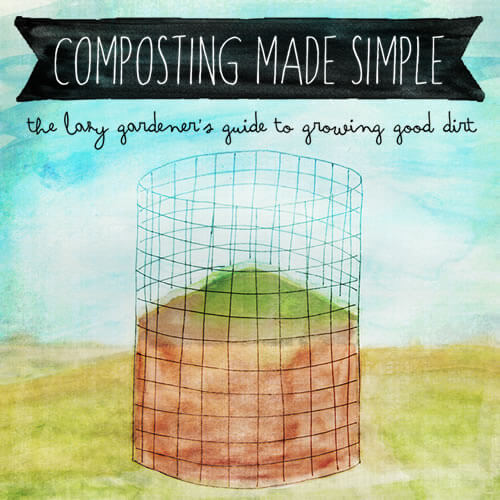
We take a break from our previously scheduled programming to bring you:

Yes, folks, spring is here in our lovely Livermore Valley. The last of the year’s few storms have passed and the hills are as green as they’re likely to be for a while.
It’s that time of year when the gentleman farmer and I step away from our screens, dust off our green thumbs and get out into the garden. Last weekend we dug into the compost that’s been steeping all winter, spread it into our garden beds and made a nice little home for an assortment of veggies.
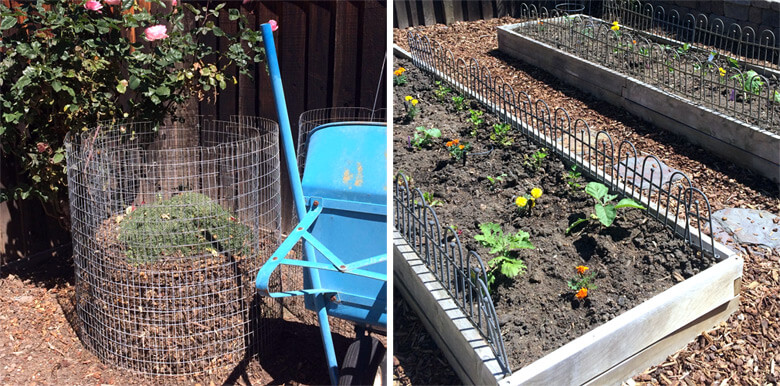
While we may not always be the most industrious of weekend suburban farmers, we have become quite the compost connoisseurs over the years. Ever since my soil science classes in college (which led to a short-lived interest in composting toilets… we won’t get into that here), I’ve been fascinated with growing some mighty fine dirt.
This doesn’t mean that we’re compost purists. We actually don’t follow any strict rules except for what we keep out of our heap. As a result, we’ve figured out a pretty simple method for stewing the stuff that works for us and, more importantly, for our garden.
In honor of spring, here’s an illustrated guide for composting the simple way. You can find more helpful information about composting at helpfulgardener.com, motherearthnews.com and cultivatorscorner.com. If you have your own composty wisdom to offer, I’d love to hear from you in the comments below.

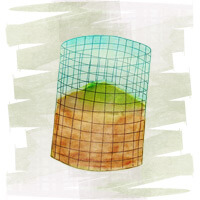
The Container
There are tons of prebuilt bins and DIY plans out there, but a simple circle of sturdy wire mesh set right on the ground will make a great enclosure for your heap. The wire hoop can be removed or opened when you’re ready to dig in. Having two or three of these enclosures handy is nice when you’re ready to let one pile sit and start building another.
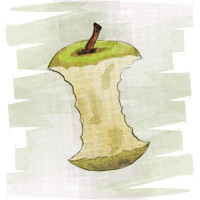
The Ingredients
Try to add balanced amounts of dry brown materials (like leaves, straw and dead plants) to wetter green materials (like grass clippings, coffee grounds, fruits and veggies). Add a scoop of dirt from your garden every once in a while too. DO NOT ADD chemically treated plants, diseased plants, noxious weeds, poisonous plants, oil/fat, meat, dairy or pet feces.

The Water
You don’t want your pile to get too dry, so add a little water every once in a while. You also don’t want your pile to get wet and soggy, but if it does you can add dry material and turn it to help it air out.
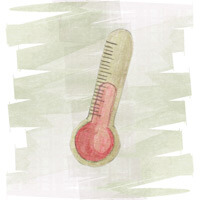
The Temperature
If precisely managed, a compost pile will get hot as decomposition speeds up. Don’t get caught up in this hurry. The best compost sits aside for a few months, warmly stewing as the microorganisms inside do their languid work.
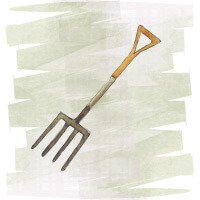
The Muscle
Once you’ve got a little heap to work with, stick your garden fork in occasionally and dig around a bit. You don’t need to do a full turning unless you want to.
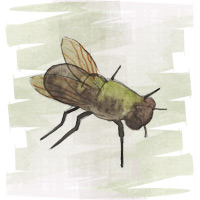
The Troubles
Too many green materials can make a compost pile stinky and attractive to pests. Reduce these troubles by turning the pile, adding some dry materials and/or covering your pile with a layer of dirt.
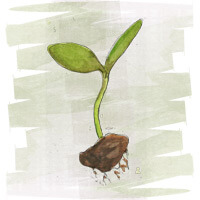
The Garden
Once your compost heap has been stewing for a few months, it will start to smell fresh and earthy and look dark and crumbly. Don’t worry if it still has some partially broken-down plant materials in it. Add a layer over your beds before you plant your garden and spread some around established trees and plants.

6 Responses
I hope you keep us posted on the progress of your spring garden so we can get vicarious delight all through the season!
(I always love your illustrations, and the photos make your garden come alive—even in my own hard-pan world.) Thanks for sharing your garden, and your talent. (I hope we get a sample of the harvest, too.)
Thank you! There will be a bucket of tomatoes with your name on it!
Wondering about two things. Is it ok/wise to add soiled straw from the chicken coop? Also, should we purchase and add additional worms? A friend suggested getting red wrigglers.
Thanks!
Jena
Thanks for your comment Jena! I don’t do either of these, but they both sound like they would help add nutrients and speed up the decomposition process. They also sound like they would require a little more management and care for tending your heap.